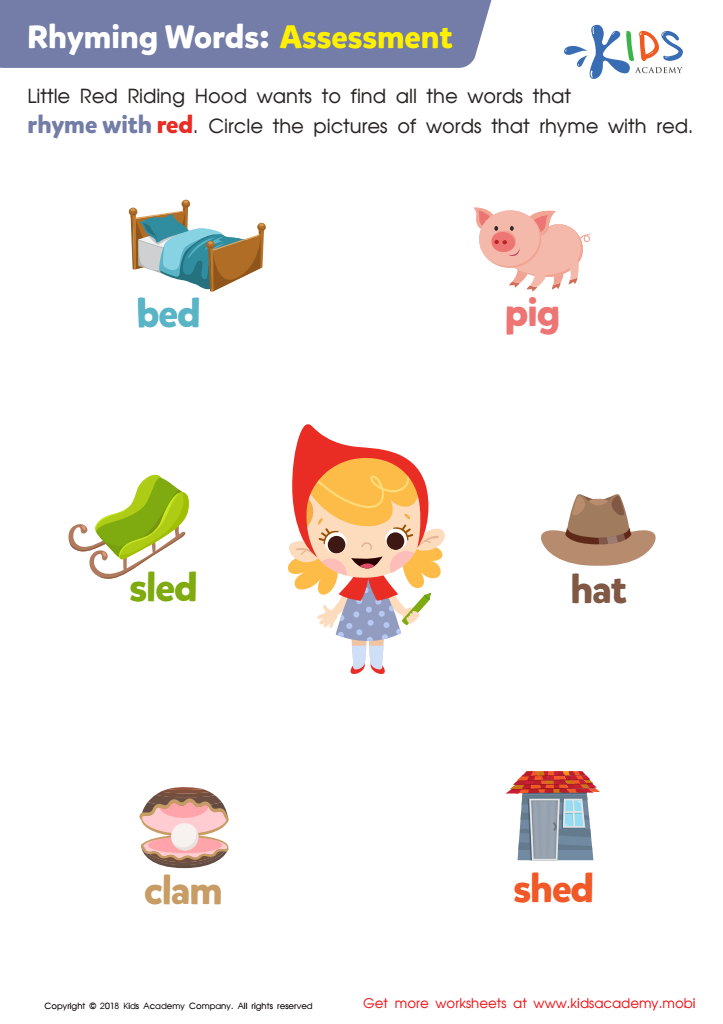Normal Rhyming Worksheets Activities With Answers for Ages 4-5
1 filtered results
-
From - To


Rhyming Words: Assessment Worksheet
Normal Rhyming Worksheets Activities With Answers stand as an invaluable tool in the realm of language development and literacy skills. These activities, meticulously designed to engage learners of all ages, play a pivotal role in enhancing phonemic awareness, vocabulary expansion, and reading proficiency. Let's delve into the reasons why these worksheets are so beneficial.
First and foremost, Normal Rhyming Worksheets Activities With Answers offer a structured approach to learning how sounds correlate within the English language. This fundamental understanding is crucial for young readers and writers, as it lays the groundwork for decoding words and phrases efficiently. By identifying patterns in rhyming words, students can anticipate word endings, making reading a smoother and more enjoyable process.
Moreover, these activities indirectly boost vocabulary. When learners encounter rhyming pairs or sets, they are exposed to a variety of words, some of which may be new to them. This exposure in a context-rich environment allows for a deeper understanding and retention of words and their meanings. Consequently, students enrich their linguistic arsenal without the process feeling like a chore.
In addition to cognitive benefits, Normal Rhyming Worksheets Activities With Answers also provide a self-check mechanism. With answers available, students can independently verify their work, fostering a sense of accomplishment and motivating them to engage more deeply with the material. This autonomy in learning cultivates confidence and encourages students to take charge of their educational journey.
Lastly, these worksheets are versatile and can cater to a wide array of learning styles. Whether a student prefers a more visual approach or learns better through repetition, rhyming activities can be adapted to meet their needs. This customization ensures that every learner can benefit from the exercises, making the learning experience inclusive and effective.
In conclusion, Normal Rhyming Worksheets Activities With Answers are not just another educational resource; they are a gateway to mastering language skills. Through engaging with rhymes, students not only learn to recognize patterns but also expand their vocabulary, improve reading skills, and build confidence in their abilities—all of which are essential for academic success and beyond.

 Assign to the classroom
Assign to the classroom











